
The Importance of Corporate Social Responsibility in Marketing (+ Examples from Brands Who Are Nailing it)
By now, you’ve heard of TOMS shoes. The brand, which launched in 2006, pledged that for every pair of shoes purchased, they’d donate a pair to people in need.
While it seemed revolutionary at the time, TOMS wasn’t the first, and they won’t be the last. But it’s the brand we chose to mention because nearly every U.S. marketer is familiar with it—which means their marketing is working.
Their particular type of marketing, however, is one that has an interesting reputation—that’s because it’s largely based on CSR activities.
What does CSR stand for? Corporate social responsibility.
CSR is important to many consumers, though experts wonder if it’s a fad and business owners can feel embittered by what they deem to be unnecessary pressure.
Our take is that CSR is here to stay, and CSR marketing is an important tool for attracting new customers as well as maintaining their loyalty.
Here, we’ll dive into how CSR marketing differs from traditional marketing and how to make sure your CSR marketing strategy is both meaningful and authentic.
Table of contents
CSR marketing is more than a gimmick: Why “doing good” is table stakes
While consumers in 2006 may have been impressed and even wowed by TOMS’s mission for social good, today’s consumer expects it.
According to a survey by Accenture, 62% of global consumers want companies to take a stand on issues they are passionate about, and 64% said they find brands that actively communicate their purpose more attractive.
So, doing good is now the norm if you want to appeal to the modern consumer.
But it’s equally important to remember that consumers are smart. CSR marketing has become table stakes not only because of market sentiment but because it’s the right thing to do. And with social media democratizing the way information is shared like never before, consumers are aware of which brands are walking the talk.
Especially with issues like climate change, consumers are holding brands to account.
Engineering and tech company Bosch (best known for their tools and home appliances) have stood up for sustainability and action against climate change through ambitious, environmentally-friendly initiatives. They publicize their messages widely through their website and social media campaigns.
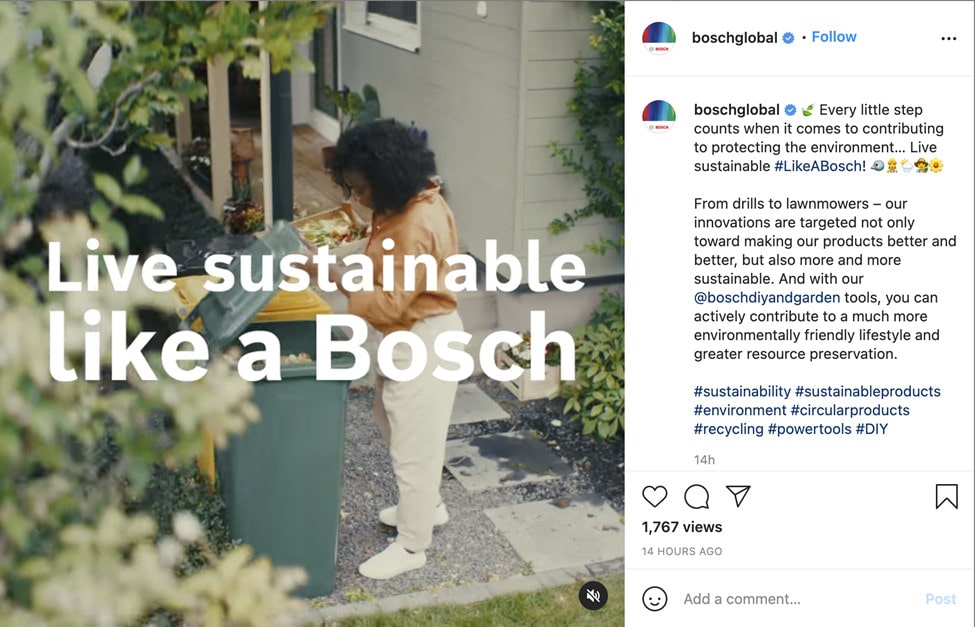
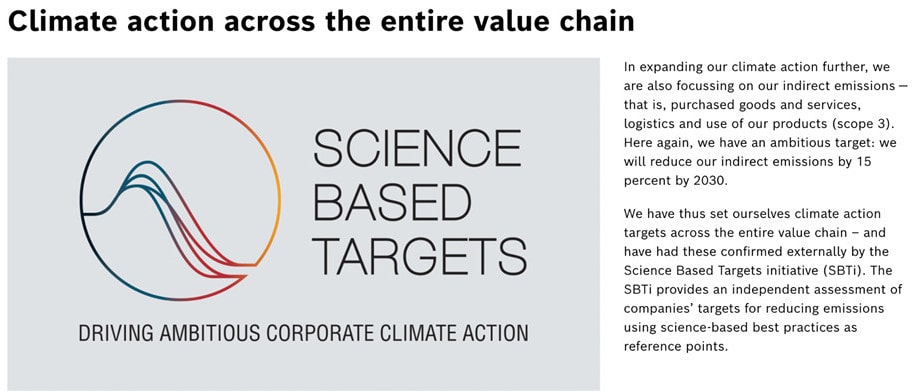
Consumers can parse their concrete statements from all the other brands who claim they’re taking a stand without showing their plans or their results.
CSR campaigns can be divisive. Organizations will take different stances on issues that the public feel passionately about one way or the other. Some messages will be agreeable to consumers and some won’t. As a brand, you’ll need to own that.
Of course, every brand cannot be an advocate or warrior for every single cause. Nor should they. But when you do decide to take a stand, make it a thoughtful one that comes from a core business purpose or value—not because you think it may boost sales.
The impact CSR makes on brand equity
While there are times we’d all like to be Bosch, marketers also have KPIs to meet. Most business leaders can’t spend all their time and budget dedicated to social justice.
CSR initiatives are critical to your business’s bottom line, but proving that to stakeholders isn’t always easy. It’s important to show them why CSR makes a positive impact on marketing and brand equity as a whole.
In this day of democratized information via social media, consumers can suss out brands that put out a shallow message versus the brands that mean it. Even making a donation once in a while won’t necessarily cut it for today’s consumer.
To return to the Bosch example, customers are likely to trust their messages because of the work they’ve done to reach carbon neutrality. Their products are already designed to be energy efficient, but they have laid out on their website further plans to optimize their entire supply chain. They’re also helping other companies follow in their footsteps with partnership programs.
We all know that the most successful brands are able to build trust—the height of brand equity—with their consumers. Implementing some of these initiatives might have felt risky and expensive for Bosch at the time, but it’s paid off as consumers return to the brand because of their results.
A widely cited Nielsen study corroborates this idea, stating that two-thirds of consumers say they will choose products from sustainable sources over other products and are more likely to buy products repeatedly if they know the company is positively impacting the environment.
How to develop a CSR marketing strategy
We’ve discussed why CSR is important, but once you have buy-in and a plan in place, how can you effectively market it?
Let’s dive into how CSR applies to marketing and how you can create a strategy that both does good in the world and keeps your stakeholders happy.
Use your value to inform your strategy
We mentioned earlier that it’s unlikely your brand will want or need to respond to every current event, donate to every cause, or tout yourselves the problem solvers of all the world’s ailments.
Coming up with your CSR strategy begins with reflecting on your company’s purpose and values.
For example, if you’re an online education platform, you may reflect on the stigmas around a lack of access to education for women and girls across the world. You may also think about the impact of natural disasters on schools (when communities are wiped out by earthquakes, for example). Whether you decide your brand will focus on social issues, environmental issues, or something else entirely, there’s a lot for you to think about. There’s also a lot you can do in a way that’s relevant to your brand and your audience.
This same business, for example, probably wouldn’t want to make PETA (People for the Ethical Treatment of Animals) its nonprofit partner. Not only would this partnership not make sense based on the brand’s mission, product, and audience, it would seem disingenuous and nonsensical to its consumers (even though they might love animals, too).
Prove your values in your product development
It’s no good talking about the impact you’re making if products are still being developed in sweatshops. And if they are, that should be the issue you address with company stakeholders before going to them with a CSR marketing strategy.
Consumers are conscientious enough to see that a brand coming out with 40 new fashion lines per year and claiming sustainable practices is greenwashing. Lead your mission through your products to prove you believe what you say you do.
Creating marketing campaigns and content that make a difference
Coming up with a relevant mission and making sure its core to your entire business is the hard part. This next part is fun.
Now, we can execute the actual creative. How do you create content and ads that cause people to stop and think?
The best CSR programs inspire others to do better, but they also go in depth for those who are interested in learning how the company has taken action.
It’s increasingly common for brands to share impact or responsibility reports that detail how they’re working to achieve their CSR goals. How you get people to read that report—or digest it in smaller pieces—is an important part of your CSR marketing.
Video content can be highly engaging and easily shareable. Take Unilever’s Farewell to the Forest campaign. Their marketing team and media partners launched a video that hosted facts and a powerful narrative about the current state of rainforests, ending with their sustainability pledge.

Of course, you can host your CSR information on your website, dedicating a webpage to it as BrewDog has done.
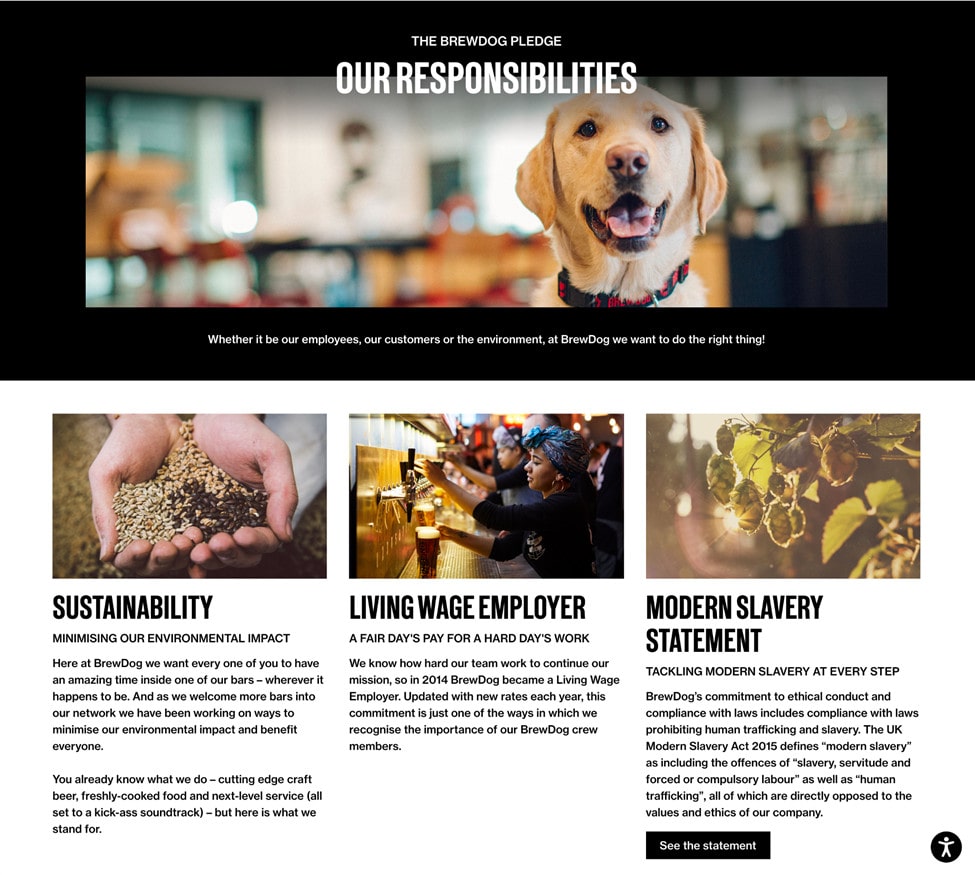
Take your mission to social media
While it’s only a single channel, social media is tightly aligned with the concept of CSR. When done well, social media allows your audience a “behind the curtain” view of your CSR efforts.
While a great CSR ad might tug at consumers’ heartstrings, social media is where you can prove—and showcase—the good you’re actually doing. It also gives you the opportunity to engage with consumers by asking questions about what they’d like to see, responding to their questions about the work you’re doing, and generally understanding which part of your mission they’re most invested in.
Partner with suppliers who “get it”
Finding the right agencies and vendors who share your beliefs can make the evaluation process more difficult.
In order to bring your vision to life, it will be much easier to work with people who understand and appreciate the mission you’re on. You can often find vision and mission statements, as well as brand values on websites. Another useful place to look is supplier case studies. How have they helped others achieve what you’re trying to achieve?
For example, on SPL’s About page, we state exactly what we do, how we can help, and what makes us different. We also provide a page for case studies so inquiring brands can get a feel for how we work. We pride ourselves on ensuring digital experience decisions stay true to our clients’ vision and goals.
4 CSR marketing examples from brands who are nailing it
We’ve already talked about Ben & Jerry’s, but let’s take a look at a few other brands whose marketing efforts are nailing it from a CSR perspective.
1. Allbirds
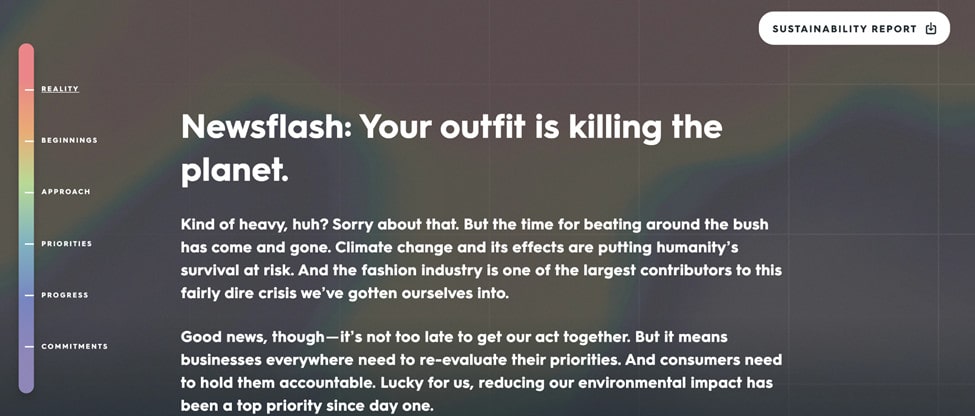
First up, San Francisco-based shoe brand Allbirds. Remember how we said it’s important to remember that today’s consumer will hold you accountable? Allbirds does an amazing job of balancing depth and accessibility with its sustainability report.
It starts off with a catchy and thought-provoking headline: “Newsflash: Your outfit is killing the planet.” Then it delivers a few quick notes on climate change before getting right into the good news: how Allbirds is helping.
As you move through the report, you gain visibility into the environmental issues at hand, Allbirds’ progress in their journey to zero emissions, and lastly, their commitments moving forward.
The report is easy and pleasant to read, shares concrete examples, is relevant to the company’s products and mission, and leaves the reader feeling inspired to take action against climate change (and to buy Allbirds).
2. Taylor Stitch
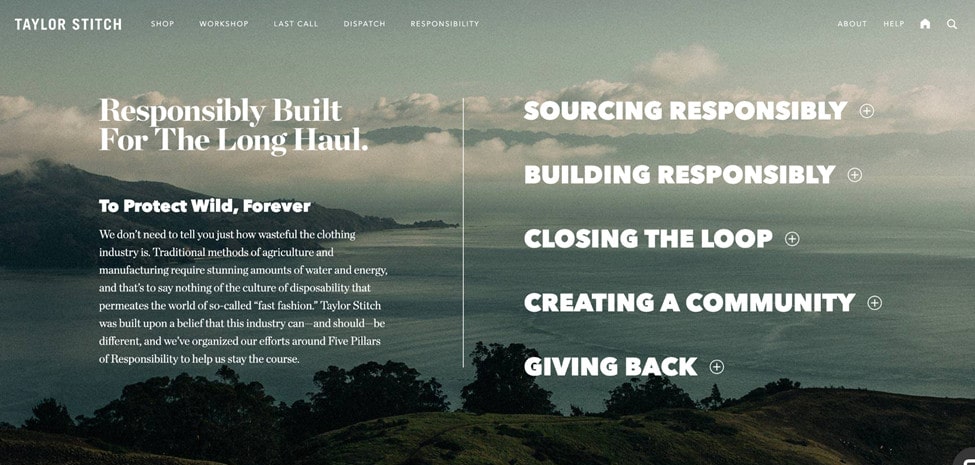
Remember when we talked about greenwashing? Seemingly every clothing brand (including huge fast fashion retailers) claims some kind of sustainable and environmentally friendly approach to how they produce, manufacture, and sell their products.
Clothing company Taylor Stitch shows you, through their responsibility page, how jumping on the environmental sustainability bandwagon wasn’t good enough. Their mission is to reimagine how consumers shop—crowdsourcing an item before it actually gets made—to eliminate waste.
Their report takes customers behind the scenes with real numbers like $4.2 million in customer savings and 8.4 million gallons of water saved from using 100% organic denim. These numbers and a true look into how they operate is an excellent example of CSR marketing.
3. Cora
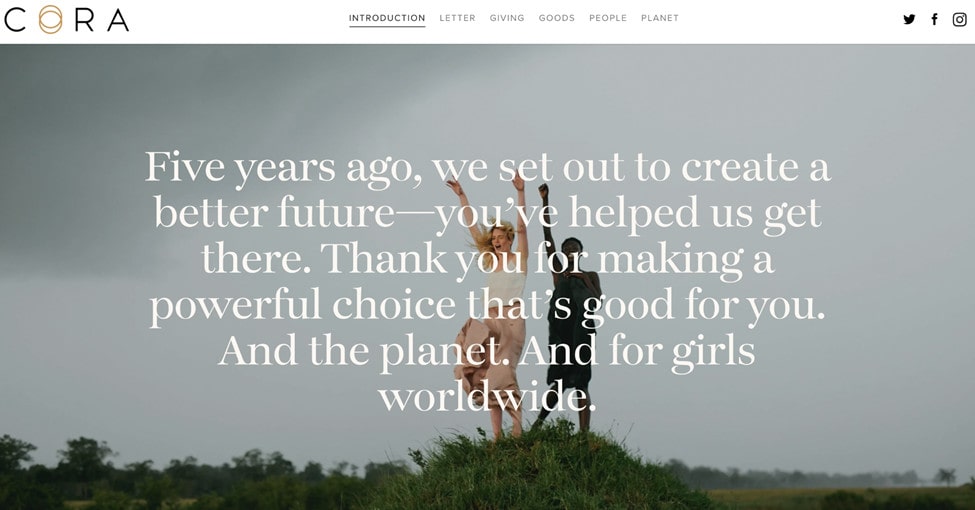
Earlier, we mentioned the importance of making your social responsibility mission relevant to who you are as a company. Feminine hygiene brand Cora makes this link clear in their annual impact report.
The main issues the company tackles are the environmental impact of things like plastic tampon applicators, as well as the fact that girls around the world miss school when they don’t have access to period products.
The report is visually beautiful. Again, it uses concrete numbers and showcases real girls in their partners’ local communities who have benefited from Cora’s program (donating reproductive health education and products to girls in need).
4. REI
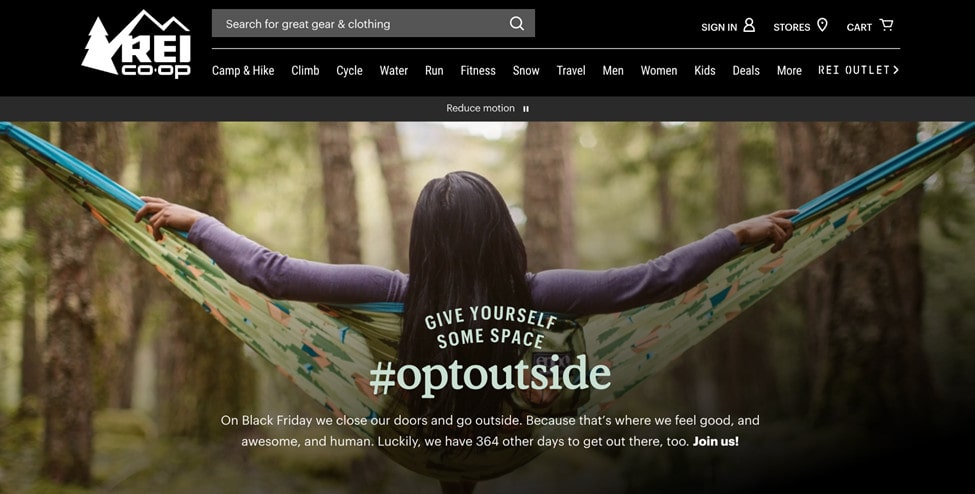
While larger than the other businesses we mentioned, REI is another great example of corporate social responsibility. The outdoor clothing and gear brand uses Black Friday strategically. While most brands get excited about Black Friday sales, REI closes its doors on this day every year, encouraging people to #optoutside.
While it may not see sales skyrocket on Black Friday itself, consumers love that it lives its mission fully in encouraging them to enjoy the great outdoors rather than spend a day at the mall. This campaign nails the authenticity piece of CSR marketing.
Wrapping up
While CSR marketing isn’t something you can implement overnight, hopefully, it’s the type of work your team can get excited about. Today’s consumers expect brands to take actions to benefit society—and mean it.
By choosing causes close to your company’s DNA and effectively telling your story while actually doing the work, you will not only earn customers’ trust and adoration but their repeat business and loyalty. And profitability aside, your social impact is something your whole team can feel good about.
READY TO PROVIDE A BETTER POST-CLICK EXPERIENCE?
Get insights and tips to drive more business from less ad spend, more profit from less cost, and more customer value from less churn.